Most Common Pests in Cannabis Plants
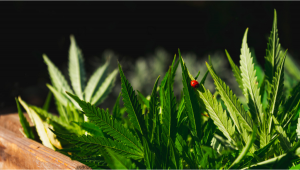
- 1. Pests in cannabis
- 2. Aphids
- 3. Fungus gnats
- 4. Leaf miners
- 5. Mealy bugs
- 6. Spider mites
- 7. Thrips
- 8. Whiteflies
- 9. Ants
- 10. Broad mites
- 11. Organic pest control methods for cannabis
- 11. a. Safe, organic pesticides that can be used in cannabis cultivation
- 12. In conclusion
Growing cannabis isn’t always smooth sailing. Before sowing feminized seeds for the first time, many cultivators imagine dreamy scenes of tending to their plants in the sun, watching them grow with little effort required. However, in reality, many different obstacles can spring up between the seedling phase and harvest time—including pests. As it happens in nature, there are numerous pests that can attack your cannabis plant. These pests can be easy or impossible to deal with, depending on the amount and gravity of the situation. A wide variety of insect species have an appetite for cannabis leaves, branches, buds, and even roots. And why wouldn’t they? After all, these parts of plant anatomy are filled with nutrients, sugars, and important proteins. What we call “pests” are often a natural component of any garden. However, you need to take the appropriate measures to make sure these critters don't ransack your weed plants. Here is some information that can help you deal with them.
1. Pests In Cannabis
Humans aren’t the only ones who enjoy the unique taste of cannabis. Unfortunately, many of the bugs that also enjoy it can ruin your cannabis plant extremely quickly. Prevention is the most important thing when dealing with any of them. If we haven’t managed to prevent their attack, we must identify, control, and eliminate it very quickly. It is very important to deal with them very quickly to avoid the consequences because sometimes they can be irreversible. The following are the most commonly found pests either indoors or outdoors. All of them can be detected and treated early with small or zero consequences but if left untreated for a long time can be deadly to your cannabis plants.
2. Aphids
Aphids are tiny white bugs and one of the most irritating pests you will encounter. A big part of the problem is their small size as they're easy to miss. They stay in the undersides of the leaves, draining out nutrients and reproducing very quickly. Indoors, in a controlled environment, aphids can ruin an entire crop super quickly.
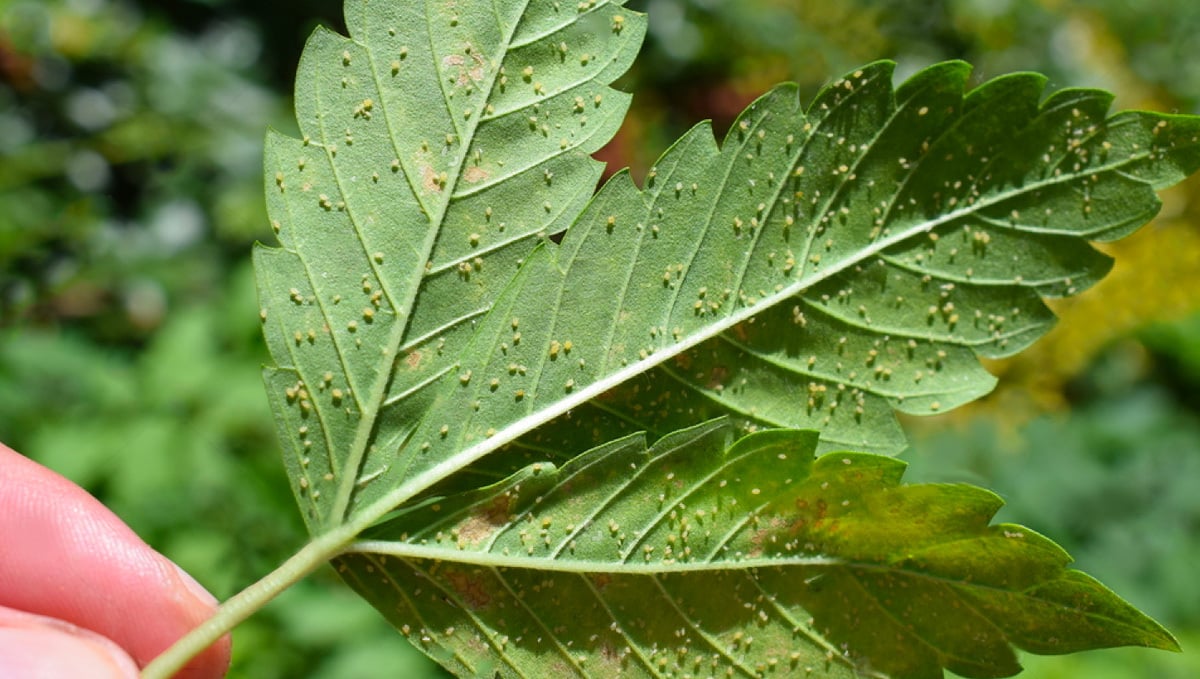
Out of all the pests that have a penchant for weed, aphids are among the most feared—even by experienced growers. Although they appear rather harmless to the naked eye, these tiny organisms can quickly swarm and overrun an entire plant. They cause damage in both primary and secondary ways. Firstly, they use their sharp mouthparts to puncture plant tissue in order to suck out the nutrient-dense sap within. After feasting, the sap continues to run and forms a small bubble-like protrusion known as “honeydew”. This substance can, in turn, attract soot-like mold that also does cannabis plant health little favor.
How to Deal?
The best way is to prevent them. If you catch the infestation early enough, you can simply remove aphids by hand. However, as their numbers increase, you’ll need to take more drastic measures. Check regularly for aphids and if you see even a couple, remove them and spray a natural insecticide like Neem Oil or any other Organic and safe-to-use insecticide. If you’re growing in pots, it’s wise to separate plants that are crawling with aphids in order to reduce the risk of them invading nearby specimens.
3. Fungus Gnats
Fungus gnats look like black ants with wings. The adults love to hang around the cannabis plants and the larvae can cause a lot of damage to the roots of your plants. They start out eating at the base of the plant and then eat their way into the root system, slowing growth and affecting the drainage of the medium.
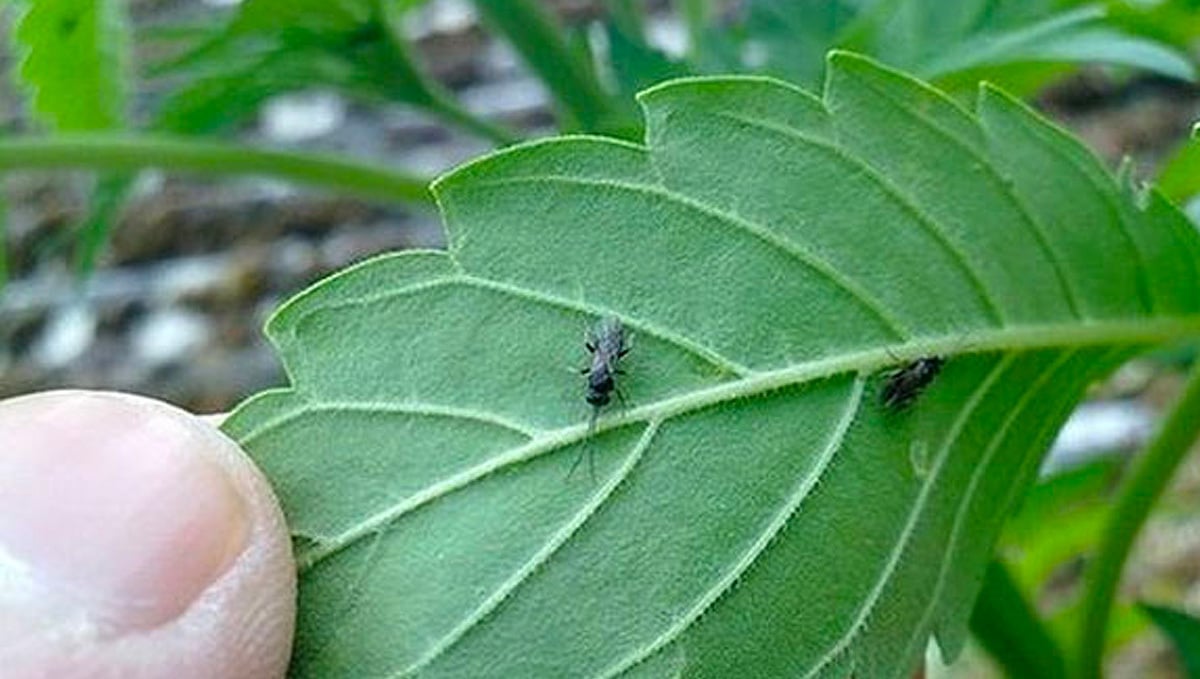
Remember though, adult fungus gnats don’t actually damage cannabis plants—they're more of an annoyance than anything else. However, fungus gnat larvae can do some real damage when their numbers are high. This form of insect lives in the soil and likes to feed on plant roots. Considering plants depend on their root system to uptake water, air, and nutrients, enough damage can cause some serious problems. If you don’t deal with the situation well, your plants will experience stunted growth and, subsequently, reduced yields at the end of the growing cycle.
How to Deal?
The most important thing to know is that fungus gnats need wet soil to grow. The most common reason they appear is overwatering. Even though there are ways to get rid of them, they will go away if you let the top part of your soil dry. But if you already have them, you can use yellow sticky cards, neem oil, or diatomaceous earth to get rid of them.
4. Leaf Miners
Leaf miners refer to the larva of any bug (flies, beetles, moths) that live inside of the cannabis leaves. They will dig through the top of your cannabis leaves, damaging the cells and draining out nutrients.

The symptoms are usually very easy to recognize: white, brown, or yellow traces running along the top of the leaves. The adult leaf miner resembles a housefly or an ant with wings, it plants the larvae under the leaves and after they hatch, they burrow into the interior.
How to Deal?
Leaf miners are really hard to deal with and because they live inside the leaves, insecticides won’t kill them. The only way to effectively treat this is to completely remove the affected leaves. If you don’t want to remove the whole leaf, you can crush the larva with your fingers where you see the trails.
5. Mealy Bugs
Mealybugs are soft little white bugs that live in the corner and gaps of your cannabis plant. Usually, if there isn’t a lot of them it won’t be a problem. It can get serious if their population gets out of control.

The symptom of a mealybug population becomes a problem when white balls start to appear on the foliage.
How to Deal?
If you need to get rid of them, there are easy ways to do so. If you have a small number of mealy bugs you can just remove them manually. But if you are suffering from a real infestation, you can use Neem Oil or lemon juice mixed with a little bit of water to get rid of them.
6. Spider Mites
Spider mites are little bugs that look like ticks and are the most common problem for cannabis growers, they reproduce extremely quickly and reach full maturity in less than a week. Their fast reproduction rate and maturity mean it is extremely easy and quick to be completely infected by these tiny creatures in a short amount of time. These bugs feed on your plants, feeding on valuable nutrients and chlorophyll until the plant dies, and can quickly ruin your entire crop if not dealt with quickly.
How to Deal?
Spider mites hate wind and heat. The best thing to do is adjust the temperature, have the fan blow directly onto your plants, and kill every spider mite you can. After removing most of them (or as much as you can) you can start treating with insecticide for mites (preferably organic and safe to humans and plants).
7. Thrips
Although thrips are very small insects, they can be a huge problem. They are worm-like bugs that have legs and may have wings depending on their age.
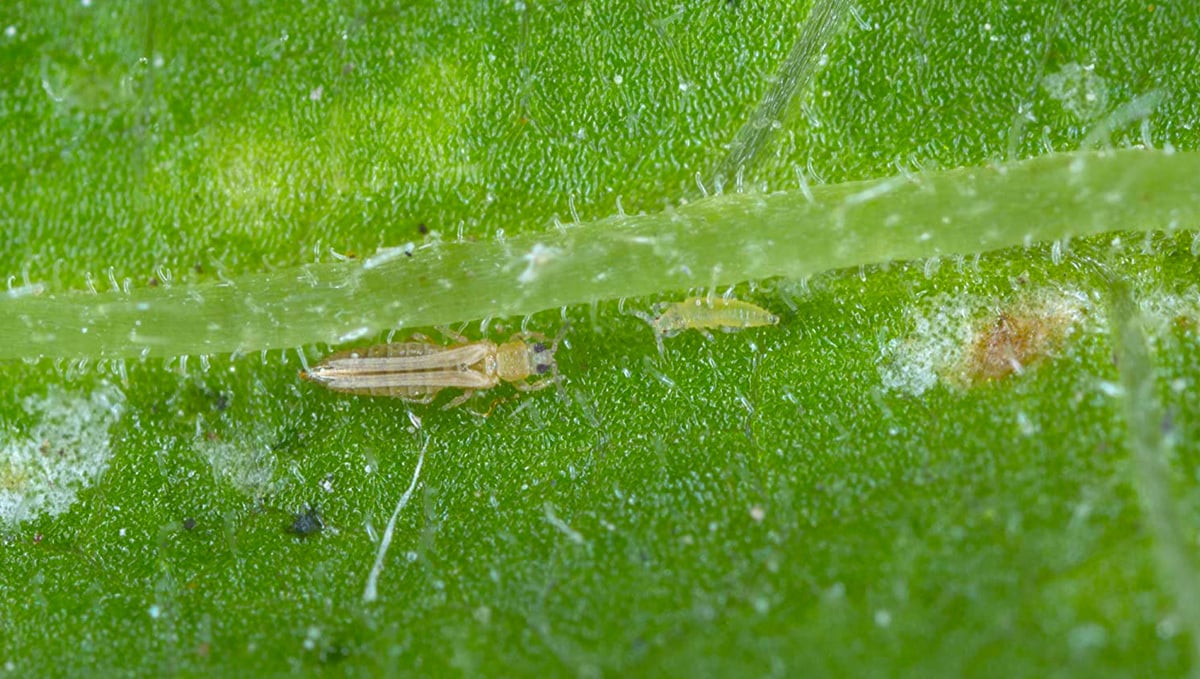
Their primary source of food is the flower itself, which means your plant won’t mature properly and the open wounds may cause diseases to your plant.
How to Deal?
As with most pests, the best way to deal with thrips is preventative action, check every couple of days to make sure there’s no sign of them. However, if you already have thrips, you can spray your plant with a mix of water and neem oil to get rid of them.
8. Whiteflies
Whiteflies are really small insects that have the ability to fly because of this they can infect surrounding plants easily.
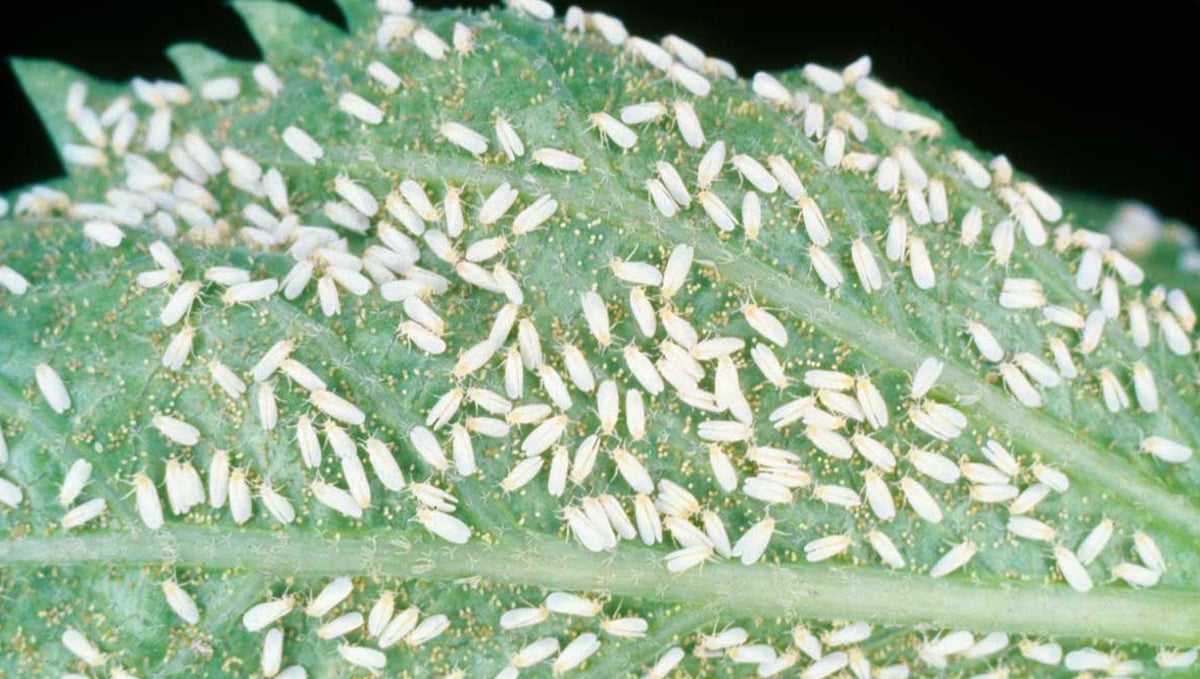
They live on the undersides of cannabis leaves and feed on the plant matter, because of this, they can infect your plant with diseases and leave open wounds that can become infected with fungus.
How to Deal?
Like with other pests, the best would be to prevent having them by maintaining a clean growing environment and always being on the lookout for bugs. If your plants are already suffering from whiteflies, you can create a mix of water and garlic to spray your plants with. This will discourage whiteflies from staying on your plant. If this doesn’t work then you will have to use more aggressive sprays like Neem Oil or Natural (or organic) insecticides.
9. Ants
Ants don’t actually affect your cannabis but they can feed off other pests, making them a sign that something is wrong. If you see ants on your plants, search for other pests that may be damaging your cannabis.
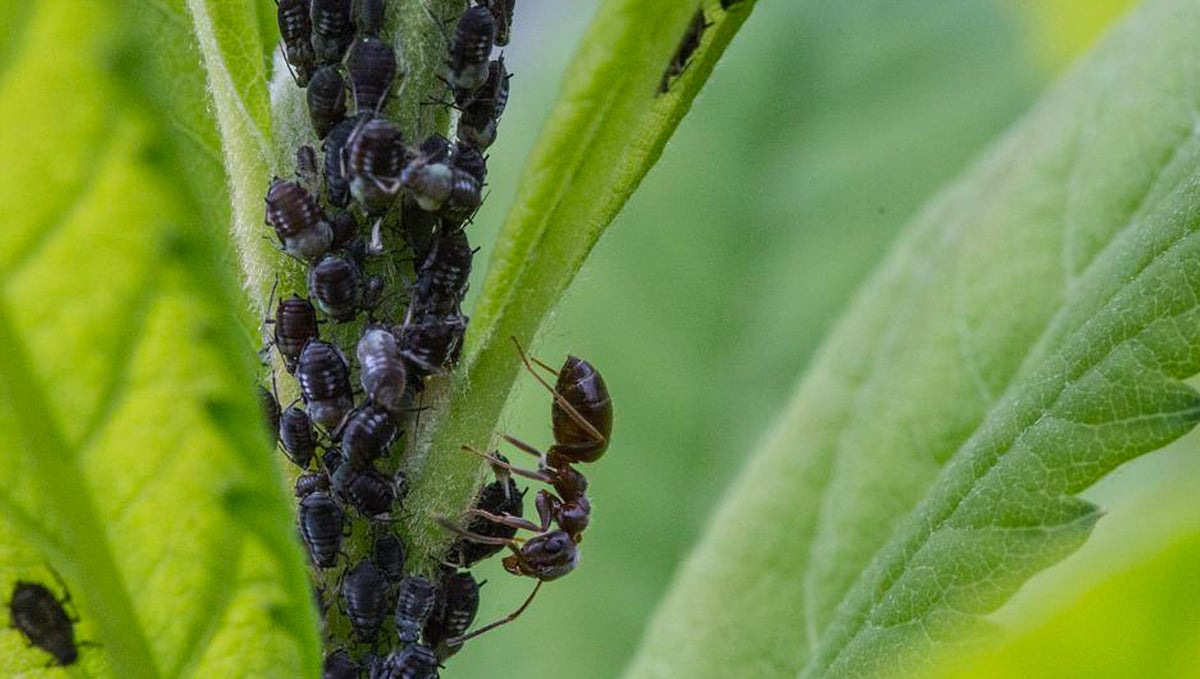
Also, ants may want to dig tunnels in your medium, this can damage the root system and make it difficult to get good water circulation among the roots.
How to Deal?
Dealing with ants can be surprisingly easy. By eliminating the other pests affecting your plant they will naturally go away. If they don’t, spraying your plants with Neem Oil or other natural insecticides will do the trick.
10. Broad Mites
Broad Mites are so tiny they are practically impossible to spot with the naked eye, and can even be difficult to see under a microscope. When broad mites are attacking your plants, the new growth may be twisted and “wet” looking. If your plant is attacked while flowering, the buds may turn brown and die. The main way to spot them is the damage they leave behind because the mites themselves are too small to see. Their symptoms can be confused with overwatering, nutrient deficiency, or heat damage.
How to Deal?
With broad mites, the best way is to throw out the whole plant. If you want to try and treat them, you can apply Neem Oil every couple of days for 5 or more weeks until they’re gone. Even applying insecticides heavily, these bugs are really hard to kill, and still, the best way is to dispose of the affected plants.
11. Organic Pest Control Methods for Cannabis
There are a bunch of ways you can help prevent a pest infestation from ever starting, and ways to treat one if you do fall prey to a plague of flying or crawling nasties. Organic options are desirable as they are less harsh on the plants, and have fewer lingering side effects that can affect the quality and yield of the crop than non-organic products. Soil (or any of the other growing mediums currently used in cannabis crops) quality has a direct influence on a plant's susceptibility or resistance to disease and pests. So, by creating the healthiest environment possible you will go a long way in preventing any issues down the line and boosting the natural immunity of the plants.
And then there are amendments, additives, and beneficial insects. These can all help in preventing and treating any pest issues you may encounter on your growing journey! Keep in mind that if you are faced with an infestation, you should do everything you can to remove the bugs before you use pesticides. By simply moving the crop outdoors and giving them a good old spray with a hose you will cut the numbers down dramatically. You should also remove any leaves or buds that have heavy infestation numbers.
Beneficial Insects
While we have just listed off all the bugs that you want to keep well away from your precious ladies, there are some insects that can actually have a very positive impact. They not only help the quality of the soil, but they also provide a safe, natural, and totally chemically free way to keep the unwanted bugs away by eating the little bastards up! When it comes to choosing the right bugs to introduce to your garden, the list is long. Obviously, if you are an outdoor grower, then releasing any beneficial insects may be a waste of time and money as they will most likely disappear in a day or two. When introducing any insects into your indoor garden, it's best to store them in the fridge for a few hours beforehand, release them when the lights are off, wet the plants down first, and add them near a food source - eg. the bugs you want them to eat.
Ladybugs
Hippodamia convergens, otherwise known as the common ladybug, is one of the most cherished bugs in the insect world. But, in actuality, they are ferocious beasts who love nothing more than to gobble up most of the pests we as growers try so hard to keep at bay. They will eat spider mites, mealybugs, whiteflies, aphids, thrips, and ants (among others). So, if you are battling softer-bodied pests consider going to your local garden supplier and grabbing a box full of Ladybugs to release into your garden.
Greed Lacewings
Green lacewings offer many of the same benefits as ladybugs, but they are handy as they are usually sold in the larvae form and can be easily shipped right to your doorstep. Keep in mind that ants love to eat lacewing larvae, so do not add these to a garden where ants are present, or too close to ground level in general.
Praying Mantis
Orius insidiosus, otherwise known as the common praying mantis. Again, they offer many of the same benefits as the previous two, but with one marked advantage. Once all the external pests have been eaten or taken care of, they will burrow into the buds to find anything hidden. Sure, this can cause some slight damage to the flowers themselves, but what would you rather do? Infested buds or slightly damaged ones? We know which ones we would choose.
Nematodes
Nematodes are a group of parasitic worms that are so small you need a microscope or at least a jeweler's loupe to see them (luckily most of us have one of these just laying around, right). There are multiple species, and since some can be actually quite destructive to a cannabis crop it is important to choose the right one. One of the species most beneficial to weed growers is the Steinernema feltiae. They kill the unwanted guests by infecting the host insect, laying their eggs inside which then hatch. The larvae will literally eat the hosts from the inside out and are one of the more effective beneficial insects on our list. Nematodes are most commonly sold in the egg form on inoculated flakes which can be added to your growing medium at any point. They can also be stored in the freezer until you are ready to use them. Other insects you may want to look into are earthworms, hypoaspis miles, rove beetles, insidious flower bugs, and delphastus catalinae.
Safe, Organic Pesticides That can be Used in Cannabis Cultivation
Neem Oil
Neem oil is one the most used organic pesticides for all crop types, cannabis included. Not only does it help prevent and treat bug infestations, but it also combats mold and fungus issues. It comes from the fruit of the Neem tree which grows on the Indian sub-continent, as well as the island of Sri Lanka. One of the best things about neem oil is that most of the beneficial bugs that we want in our garden are totally unaffected by its application, and although it does have a very low toxicity level it is totally safe for humans and other animals (as long as you don't drink the stuff). Neem oil is best used as a foliar spray but never use it straight as it will be much too potent. Mix together:
- 500 ml of water (tap water is fine)
- A teaspoon of neem oil (5 MLS)
- 3 or 4 drops of insecticidal soap
- A handheld misting spray bottle (can be found at any gardening store)
This can be used from the second week of growth all the way through to the last week or so before harvest. You can spray the whole plant (during the vegetative growth phase), and make sure to give the underside of the leaves extra attention as that is where a lot of the unwanted bugs live and lay their eggs. During the flowering growth, phase makes sure not to spray the budding sites, as this can affect the overall quality of the final product. It's not unsafe to smoke buds that have had neem oil on them, but the flavor will be affected.
Insecticidal Soap
Insecticidal soaps are fully organic products derived from plant oils and containing the potassium salts of fatty acids. This is a contact pesticide, meaning they don’t really work as a preventative tool, and loses potency quickly as they dry out. They work by:
- Melting away the protective, waxy coating that covers many of the bugs we are trying to remove from our crop. This leads to increased levels of dehydration in the insects.
- It damages and penetrates the actual cell membranes, which causes cell death.
- Most insects respirate through pores that cover their entire body. Insecticidal soaps block these pores.
- This causes whatever pest you are trying to combat to die within minutes of coming into contact with the soap. These usually come in sprayer bottles and can be directly applied to the whole plant.
Keep in mind that this will kill any and all insects - even the ones we want to keep around our garden.
SPINOSAD
Spinosad may not be as effective as some of the stronger, non-organic pesticides, but that also means there are some marked advantages to using it on cannabis crops. Made from fermented soil bacteria Actinomycete Saccharopolyspora Spinosa, these products are again a contact effective pesticide, and will effectively knock out infestations in around 3 hours after application. Spinosad products have an effective half-life of around 24 hours, so make sure you only mix up enough for the one day otherwise the rest will be wasted. Most bottles will have a mix ratio guide printed on them, but a general rule is 4 tablespoons (60 ml) to a gallon of water (4.5 liters).
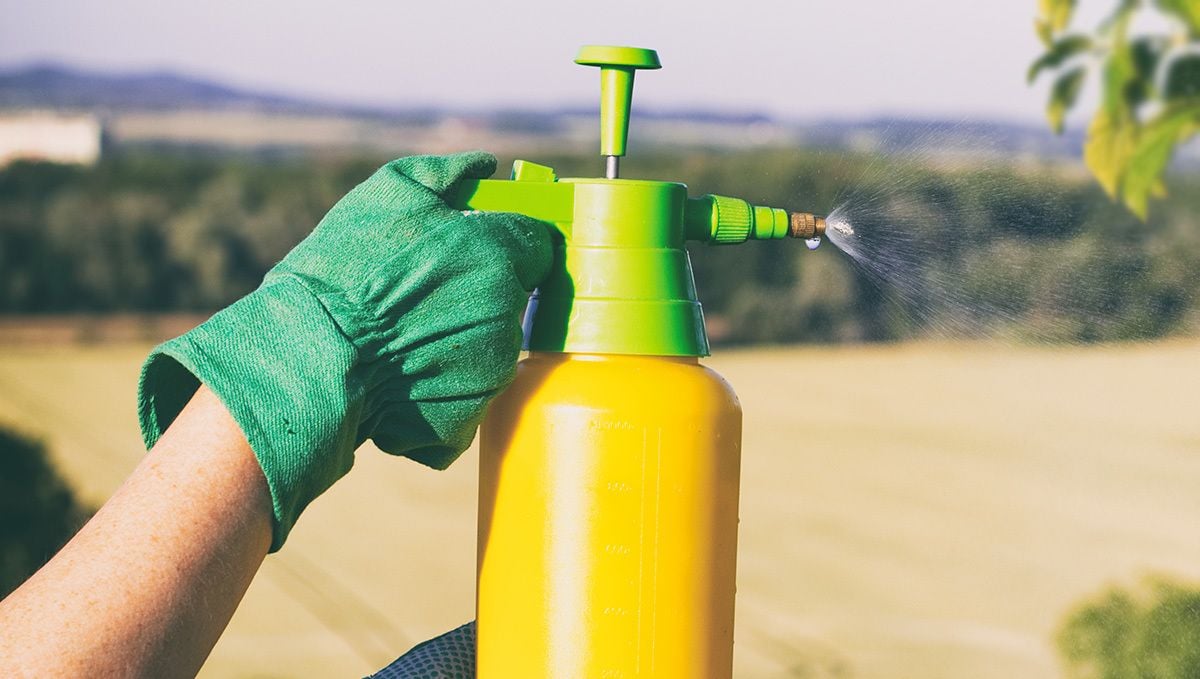
Some growers (especially outdoor cultivators) choose not to use spinosad products as they are known to affect bee populations adversely. If you do choose to use spinosad for outdoor grows, you should only spray the crop at night as bees are far less active when the sun dips. These are the three main options that growers currently use, but there are some other options available.
- Horticultural Oils are a refined and concentrated version of the plants' own natural defense oils
- Caterpillar “BT” Spray contains a bacteria that specifically target caterpillar larvae and stops adult caterpillars from ingesting the plant material
- Diatomaceous Earth is the fossilized remains of shells that are extremely sharp at the microscopic level. It is totally harmless to humans and animals and can be used as an effective preventative tool. Simple spread around the base of the plant, and at any energy points to the grow room or tent. Insects that come into contact with it will have their exoskeleton ripped and torn, which will cause dehydration and eventual death.
- A mix of rubbing alcohol and water can work as a potent and powerful pesticide. Mix 9 parts water with one part rubbing alcohol and spray your plants liberally. This mixture will evaporate in mere minutes and can be used up until the last day before harvest.
12. In Conclusion
When talking about pests and bugs, size has nothing to do with the damage they can do. When dealing with any of them, prevention is the best way to go, check your plants daily, and try to deal with pests as soon as you can. Leaving them on your plants for as little as 5 days can be the difference between being able to recover your plants and their death. We recommend always using natural and/or organic pesticides so you don’t affect your plant as much.









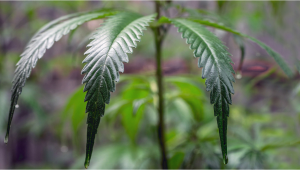


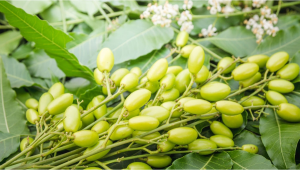


Comments